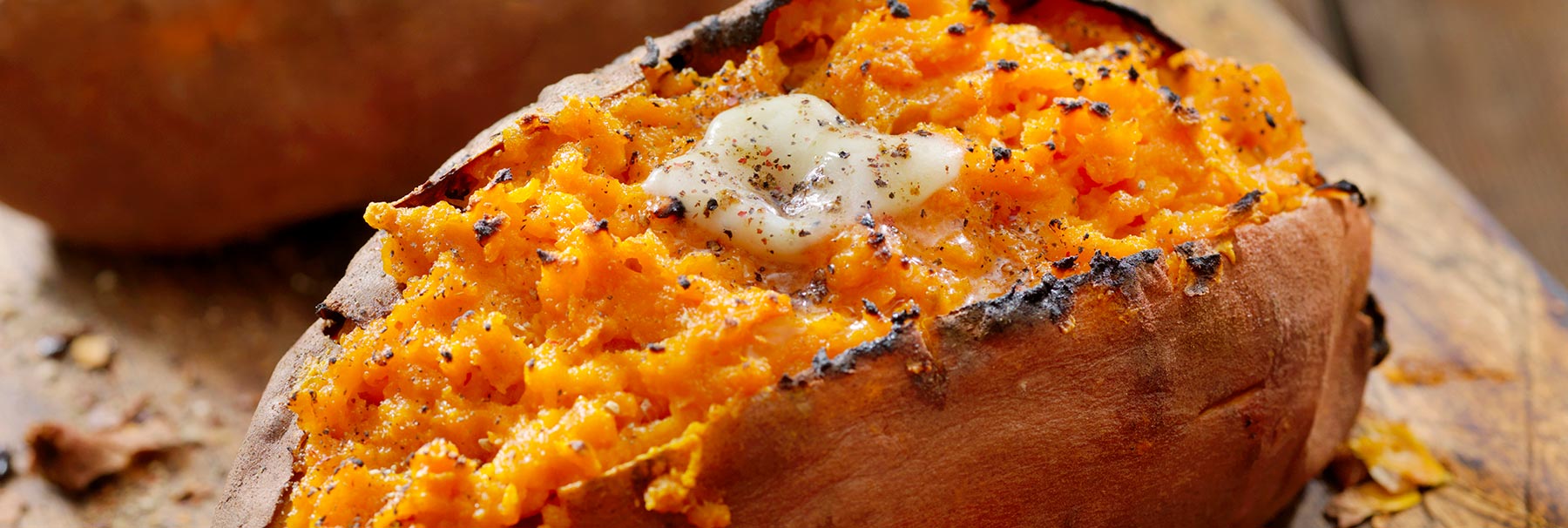Reduce Chronic Inflammation – With Food

What is inflammation, and why is it so bad for your health?
Inflammation is the body’s natural response to fighting infection, injury, and toxins. But, widespread chronic inflammation can damage healthy cells, tissues, and organs. This can cause fatigue, fever, mouth sores, rashes, abdominal pain, and chest pain. Over time, the body’s inflammatory response can contribute to life-threatening conditions, including cancer, heart disease, rheumatoid arthritis, type 2 diabetes, asthma, and Alzheimer’s disease.
What causes chronic inflammation?
One of the leading causes of chronic, widespread inflammation is excess body fat, especially visceral fat, which is stored in the belly and around major organs.
“It’s estimated that 100,000 cancer cases in the U.S. each year are linked to excess body fat,” says Lesley Klein M.S., RD, LD/N, a dietitian with Sylvester Comprehensive Cancer Center. “Research shows a strong link between excess body fat and the risk of 12 cancers.”
How does body fat contribute to inflammatory diseases? Hormones. Excess fat tissue produces hormones and high levels of a protein called cytokines. This combination triggers inflammation.
What’s the connection between food and inflammation?
While many factors can lead to weight gain and excess body fat, what you eat — and don’t eat — can have a huge impact on your waistline and your body’s inflammatory response.
Here’s a simple truth. The two main food items that increase inflammation (and contribute to weight gain) are sugar and animal products.
Of course, sweet treats like cakes and cookies contain sugar. But, added sugar is also hiding in refined foods ranging from cereal, bread, and crackers to fast foods and sauces/dressings to yogurt and non-dairy milk. Animal products that contribute to inflammation include red meat, fried chicken and pork, processed meats (frozen meals, hot dogs, sausages, canned meats, deli meats), and full-fat dairy products.
Other items linked to increased inflammation include trans fats (found in margarine, shortening, and lard) and sugar-sweetened beverages (like coffee-shop indulgences, energy drinks, fruity drinks, and some coconut water).
How to ‘Eat the Rainbow’ to reduce chronic inflammation
“I tell my patients that they should ‘eat a rainbow’ of antioxidants and phytochemicals,” Klein says. “Eating a variety of colors can help maximize the nutritional value of your diet. Each color of food is beneficial for reducing the risk and advancement of different health conditions.”
RED
Tomatoes are high in the antioxidant lycopene.
Berries and cherries provide antioxidants known as anthocyanins and catechins.
ORANGE
Carrots and orange-colored citrus fruits are rich in vitamin A and beta-carotene, which may help fight inflammation.
Sweet potato is an excellent alternative to white starches like potatoes, rice, and pasta because they contain more fiber and nutrients (and less naturally occurring sugars).
Turmeric is known for containing the anti-inflammatory nutrient curcumin. Eating black pepper with turmeric can enhance the absorption of curcumin.
YELLOW
Butternut squash, like sweet potato, is a fiber-rich starch.
Bell peppers of all colors are rich in quercetin, sinapic acid, ferulic acid, and other antioxidants.
GREEN
Broccoli contains sulforaphane, an antioxidant that reduces cytokines and NF-kB levels, which stimulates inflammation.
Dark leafy greens (spinach, kale, arugula, chard) are high in antioxidants and polyphenols and should be a staple of every diet.
Avocados contain carotenoids and tocopherols, which are linked to reduced cancer risk.
Green tea has antioxidant and anti-inflammatory properties from epigallocatechin-3-gallate (EGCG), which reduces cytokine production and damage to the fatty acids in your cells.
Olive oil contains oleocanthal, an antioxidant that’s found in higher doses in extra virgin olive oil than in more refined oils.
BLUE
Blueberries are an excellent source of anthocyanins.
PURPLE
Grapes contain anthocyanins, which also reduce inflammation.
BROWN
Mushrooms contain phenols and other antioxidants. Try eating them raw or lightly cooked to get the full benefit.
Whole grains like brown rice, whole-wheat bread, farro, and oatmeal are often high in fiber and help reduce inflammation.
Nuts like walnuts and almonds contain healthy fats that don’t cause inflammatory weight gain when eaten in moderation.
Maple syrup is better than white sugar if you want a little sweetener without triggering inflammation.
BLACK
Coffee (unsweetened) contains polyphenols and other anti-inflammatory compounds.
Dark chocolate and unsweetened cocoa provide heart-healthy flavonols. Choose dark chocolate with at least 70% cocoa to get the anti-inflammatory benefits not found in milk and white chocolate.
Omega-3 fatty acids (EPA and DHA) also reduce inflammation. Cold-water fish like salmon, tuna, cod, mackerel, herring, sardines, and anchovies, are great sources of this nutrient.
How much food should you eat?
There is no standard amount of antioxidants you should consume. It depends on your weight, genetics, daily physical activity, and daily caloric intake.
To support your overall health and avoid disease, the American Institute for Cancer Research recommends The New American Plate:
- 2/3 of your plate is packed with plant-based foods
- 1/3 can be animal products
“It’s really about eating a variety of color every day,” Klein says. “Nutrients are better absorbed through food, so I would recommend supplements only if someone is depleted of a particular nutrient.”
Dana Kantrowitz is a contributing writer for UMiami Health News.
